Preparation of a Near-Infrared Ray Absorption Film from N-Phenylthiocarbamoyl Chitosan Derivative
Abstract
:1. Introduction
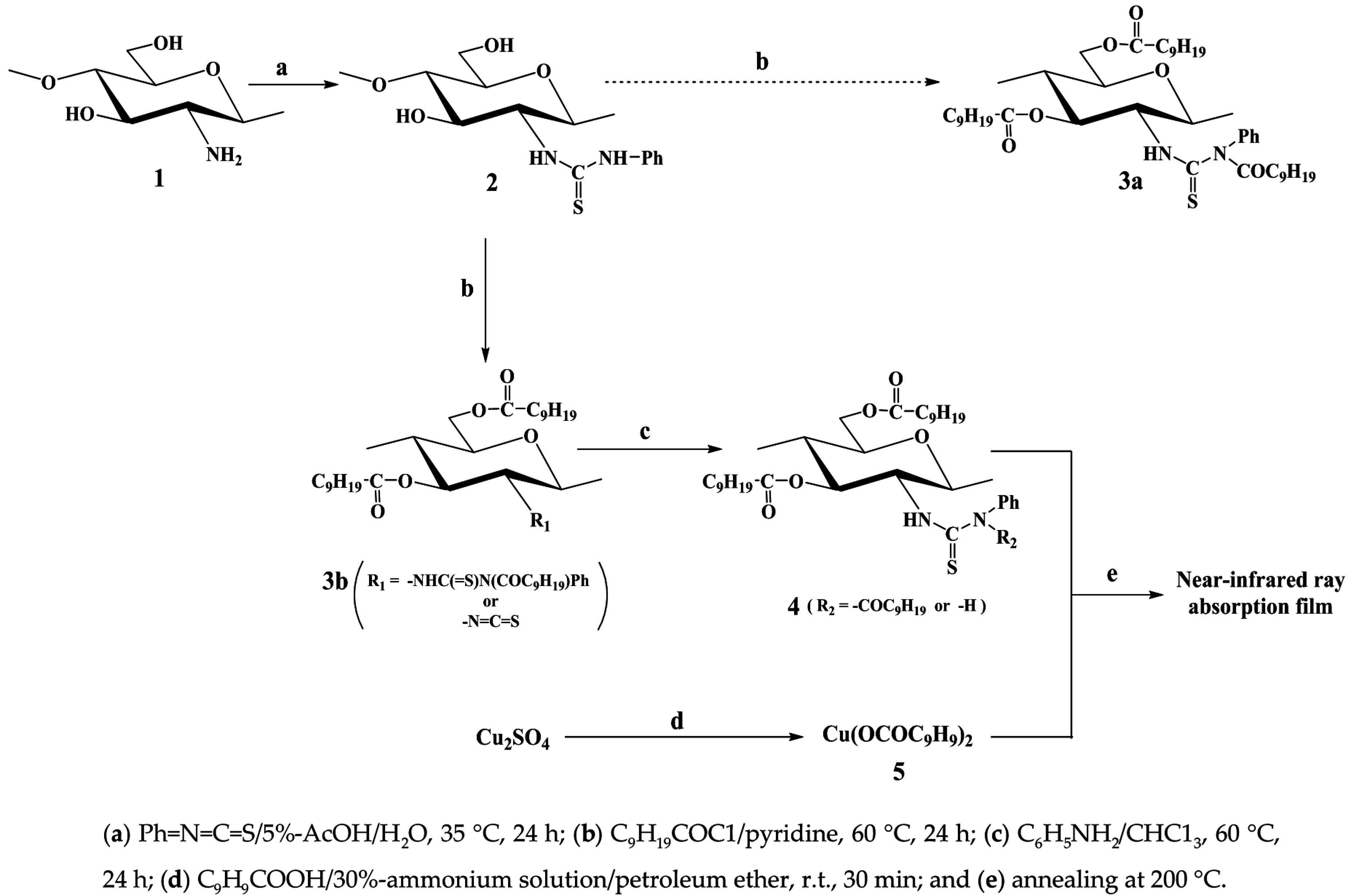
2. Results and Discussion
2.1. Preparation of N,N-(Decanoyl)phenylthiocarbamoyl Chitosan Decanoate (4)
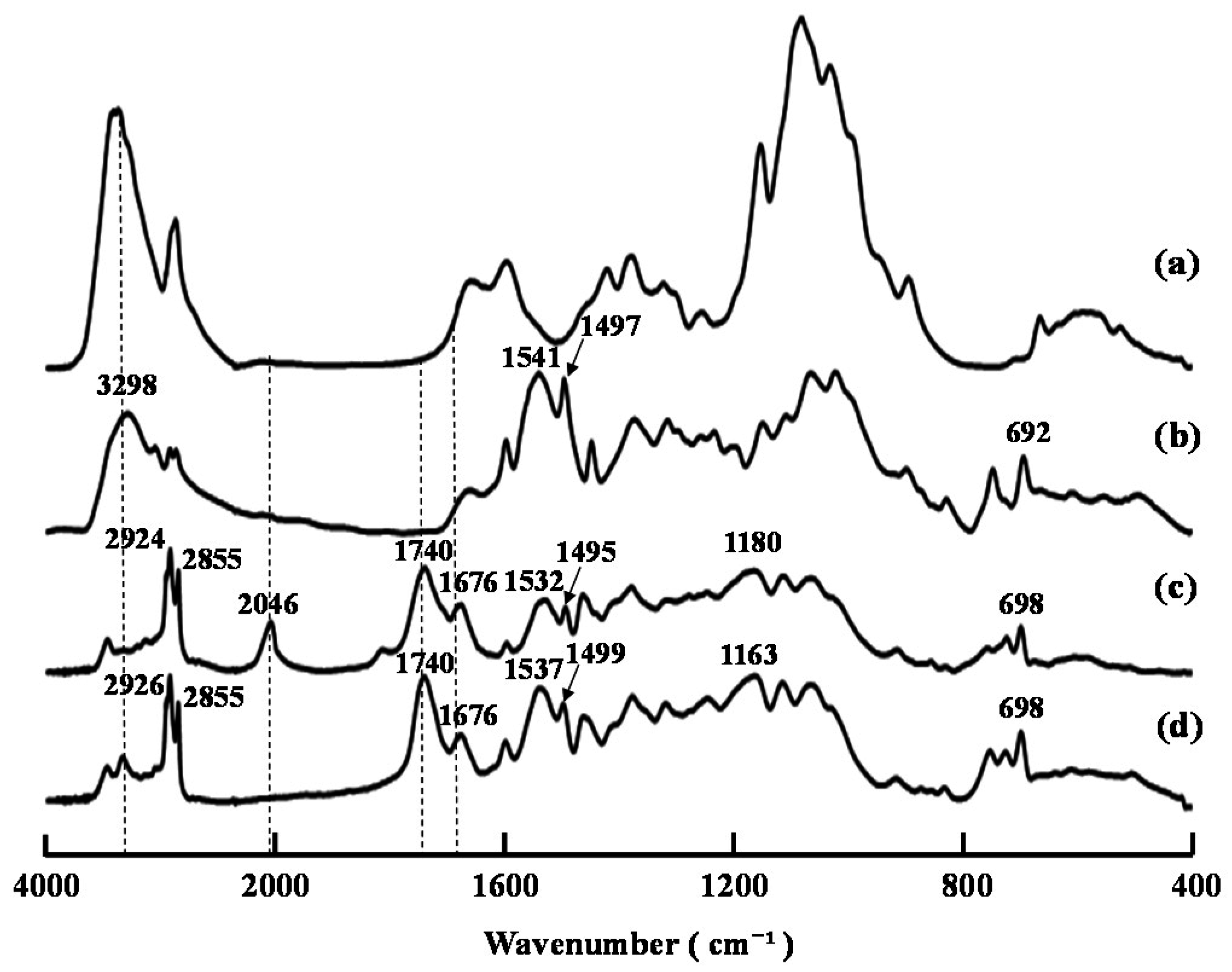

| Solvents | THF | CHCl3 | Acetone | CH2Cl2 | Dioxane | DMF | DMSO | CH3OH | H2O |
|---|---|---|---|---|---|---|---|---|---|
| δ | 9.1 | 9.3 | 9.4 | 9.6 | 9.8 | 11.5 | 12.8 | 12.9 | 21.0 |
| Compound 2 | x | x | x | x | x | O | O | x | x |
| Compound 4 | O | O | O | O | O | O | x | x | x |
2.2. Preparation of Copper(II) Decanoate (5)
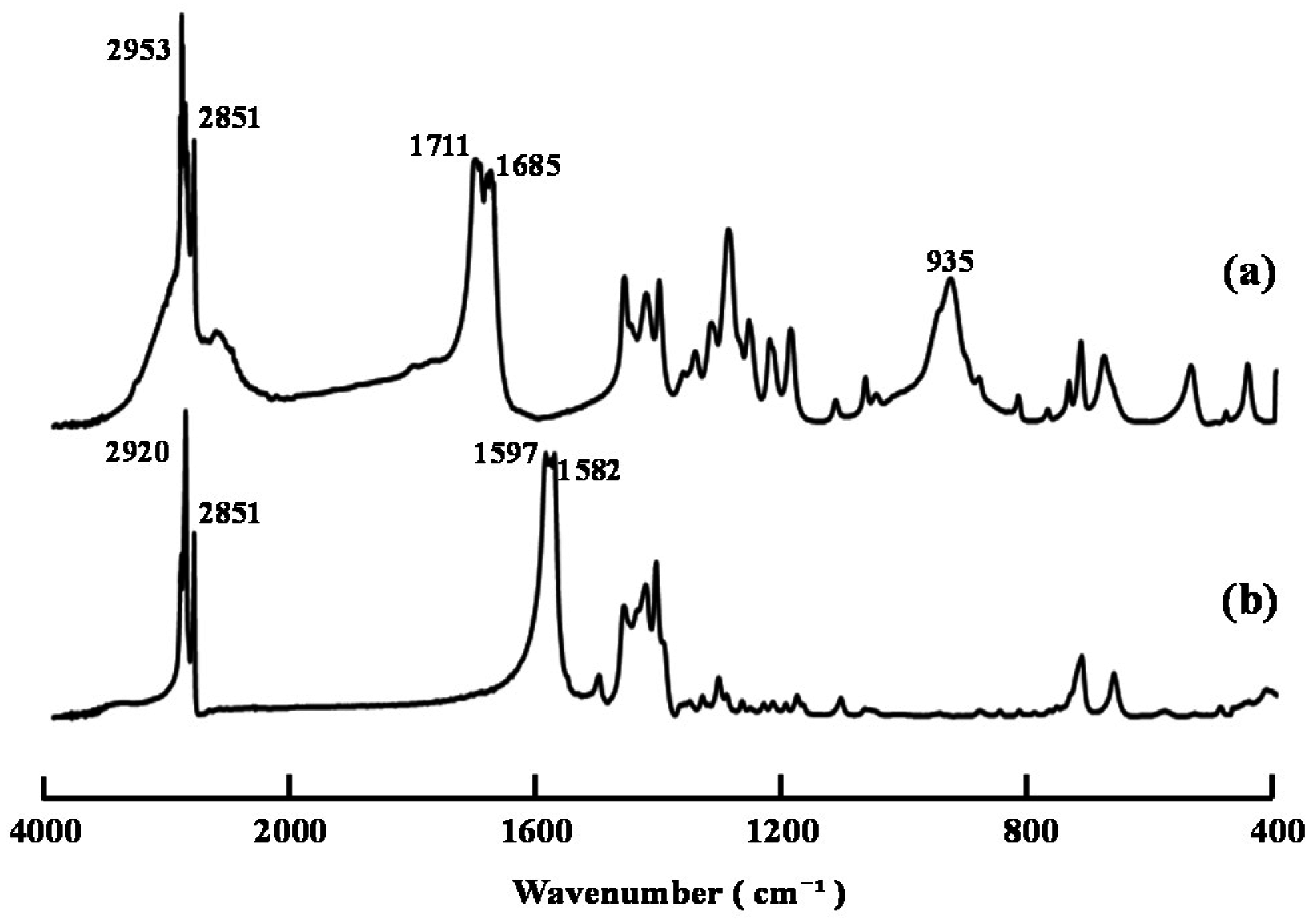
2.3. Preparation and Characterization of a Cast Film from the Chitosan Derivative 4 and Copper Decanoate (5)
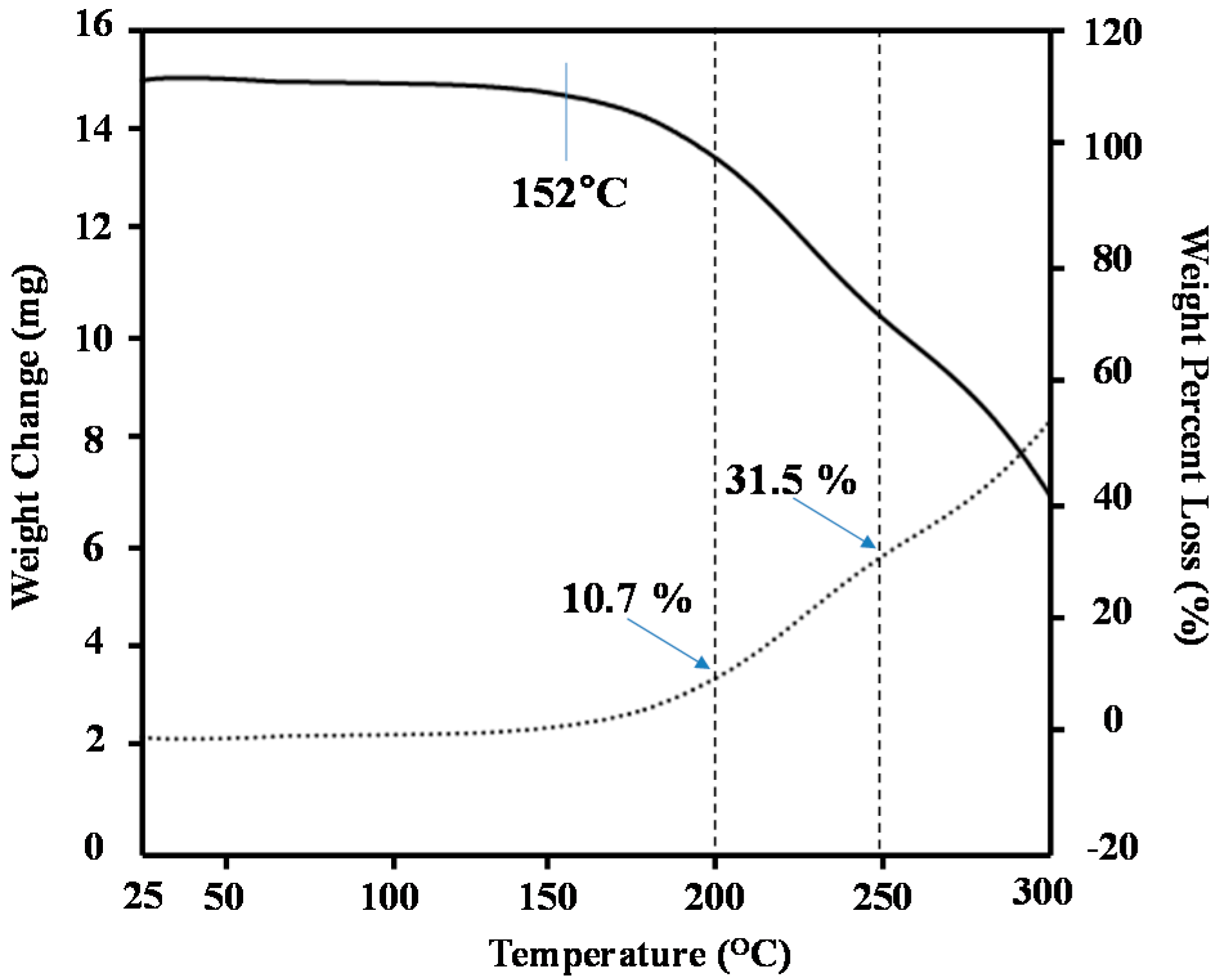
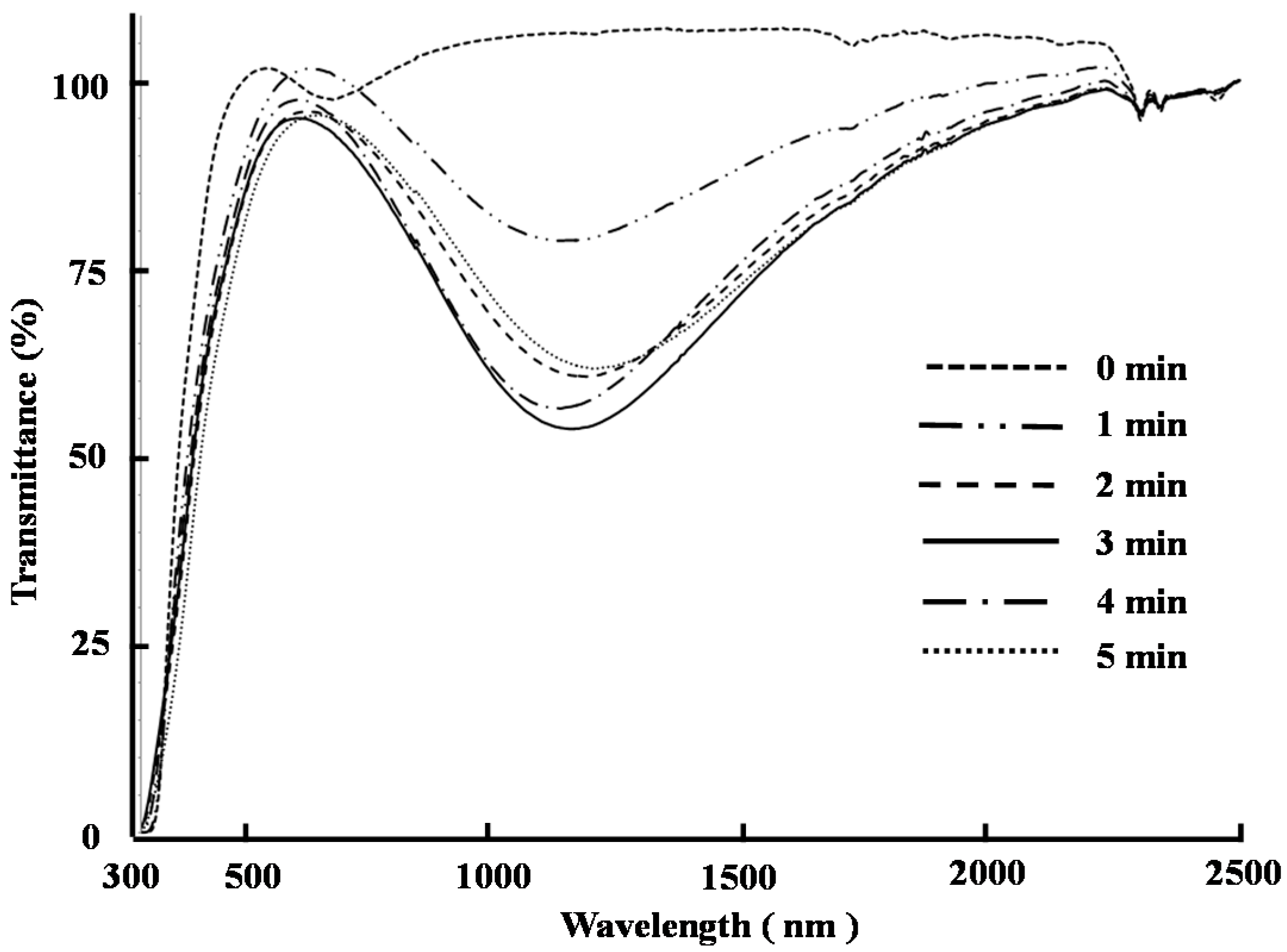
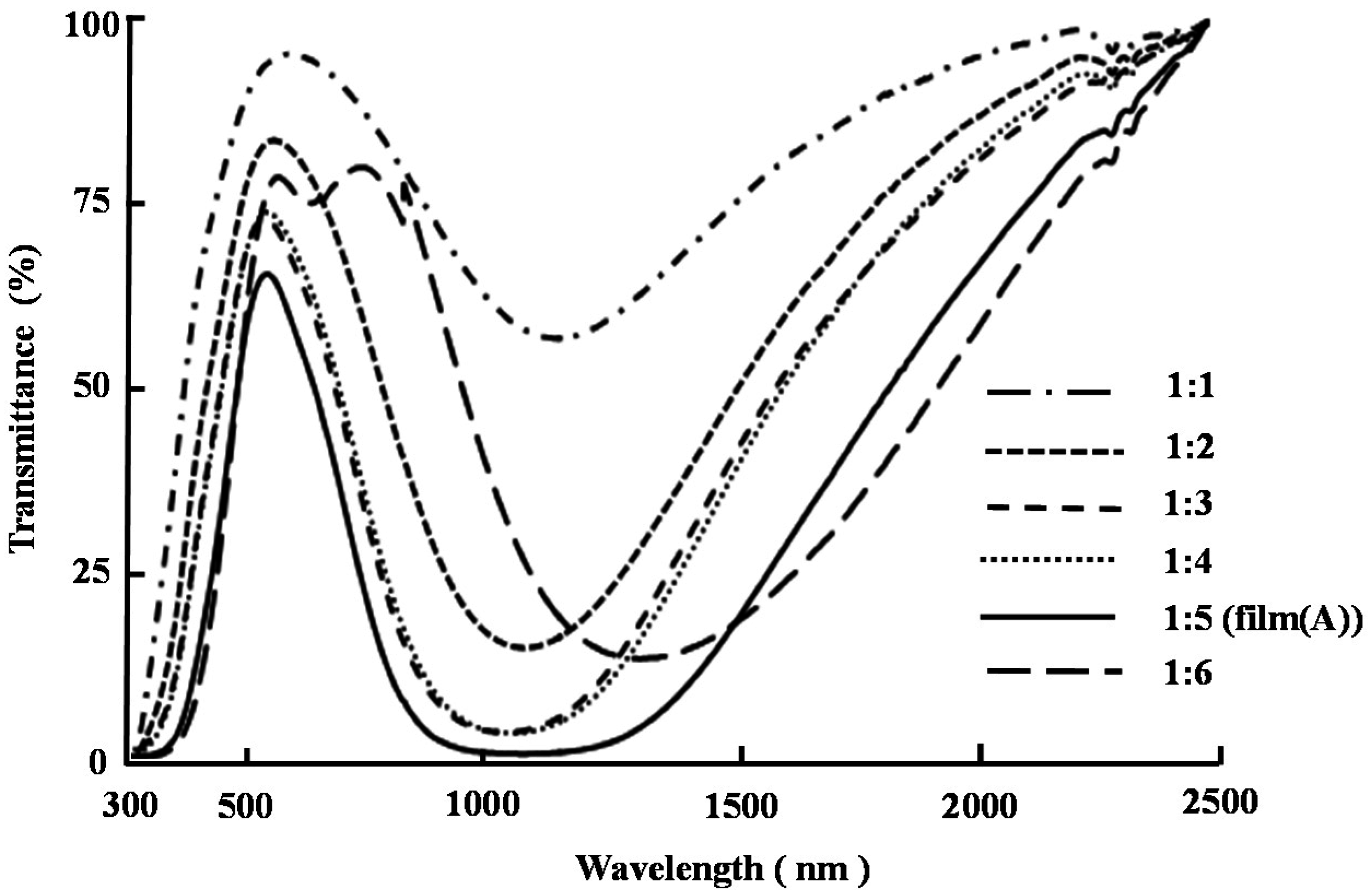
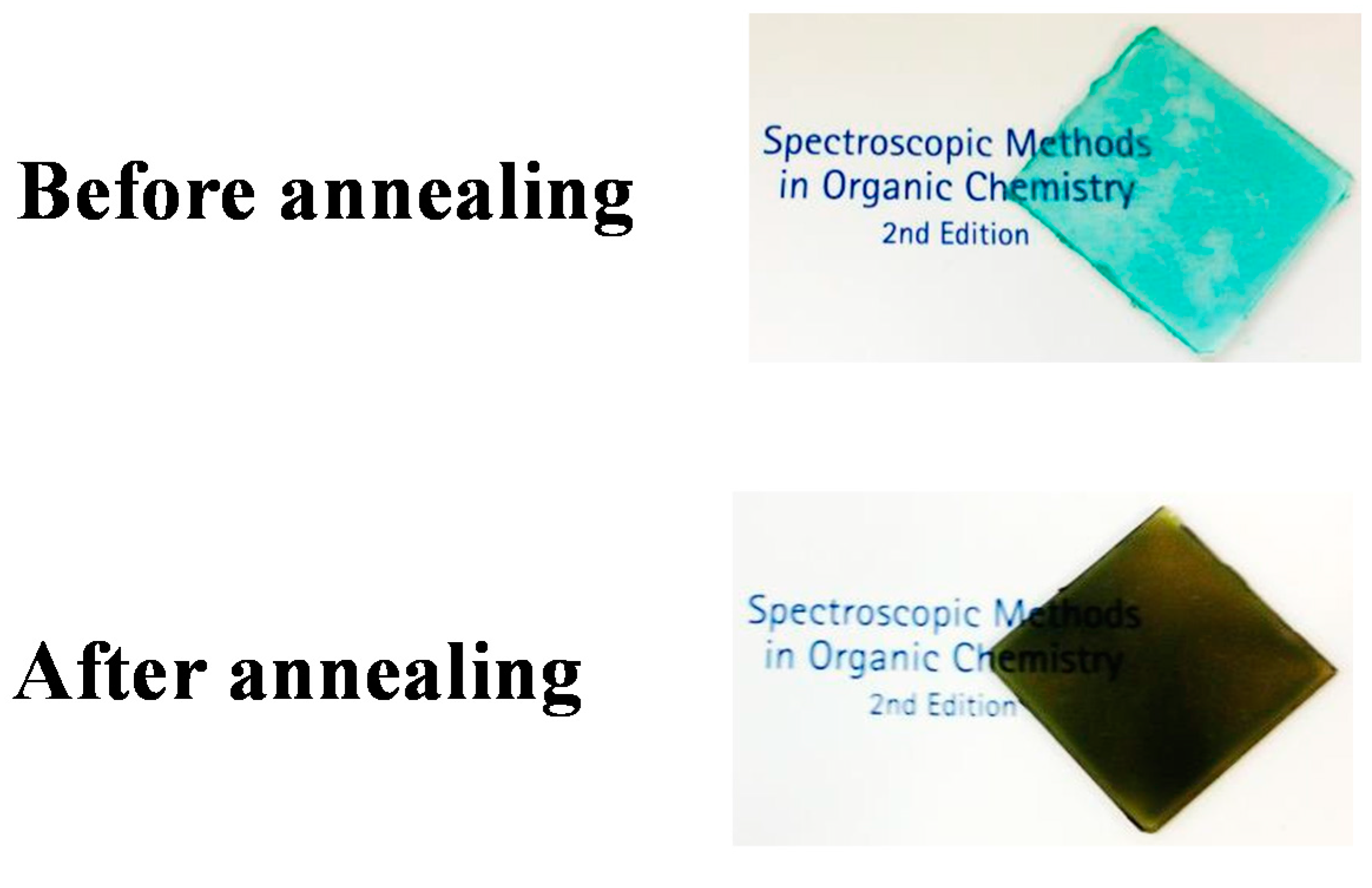

3. Experimental Section
3.1. General
3.2. Preparation of Chitosan Derivative 4 and Copper Decanoate (5)
3.2.1. N,N-(Decanoyl)phenylthiocarbamoyl Chitosan Decanoate (4)
3.2.2. Preparation of Copper(II) Decanoate (5)
3.3. Preparation of a Cast Film from Compounds 4 and 5
4. Conclusions
Acknowledgments
Author Contributions
Conflicts of Interest
References
- Ravi Kumar, M.N.V.; Muzzarelli, R.A.A.; Muzzarelli, C.; Sashiwa, H.; Domb, A.J. Chitosan chemistry and pharmaceutical perspectives. Chem. Rev. 2004, 104, 6017–6084. [Google Scholar] [CrossRef] [PubMed]
- Alves, N.M.; Mano, J.F. Chitosan derivatives obtained by chemical modifications for biomedical and environmental applications. Int. J. Biol. Macromol. 2008, 43, 401–414. [Google Scholar] [CrossRef] [PubMed]
- Sahoo, D.; Sahoo, S.; Mohanty, P.; Sasmal, S.; Nayak, P.L. Chitosan: A new versatile bio-polymer for various applications. Des. Monomers Polym. 2009, 12, 377–404. [Google Scholar] [CrossRef]
- Zhong, Z.; Xing, R.; Liu, S.; Wang, L.; Cai, S.; Li, P. Synthesis of acyl thiourea derivatives of chitosan and their antimicrobial activities in vitro. Carbohydr. Res. 2008, 343, 566–570. [Google Scholar] [CrossRef] [PubMed]
- Fekry, A.M.; Mohamed, R.R. Acetyl thiourea chitosan as an eco-friendly inhibitor for mild steel in sulphuric acid medium. Electrochim. Acta 2010, 55, 1933–1939. [Google Scholar] [CrossRef]
- Qaqish, R.B.; Amiji, M.M. Synthesis of a fluorescent chitosan derivative and its application for the study of chitosan-mucin interactions. Carbohydr. Polym. 1999, 38, 99–107. [Google Scholar] [CrossRef]
- Baba, Y.; Noma, H.; Nakayama, R.; Matsushita, Y. Preparation of chitosan derivatives containing methylthiocarbamoyl and phenylthiocarbamoyl groups and their selective adsorption of copper(II) over iron(III). Anal. Sci. 2002, 18, 359–361. [Google Scholar] [CrossRef] [PubMed]
- Monier, M.; Abdel-Latif, D.A. Preparation of cross-linked magnetic chitosan-phenylthiourea resin for adsorption of Hg(II), Cd(II) and Zn(II) ions from aqueous solutions. J. Hazard. Mater. 2012, 209–210, 240–249. [Google Scholar] [CrossRef] [PubMed]
- Yan, M.; Gu, H.; Liu, Z.; Guo, C.; Liu, S. Effective near-infrared absorbent: ammonium tungsten bronze nanocubes. RSC Adv. 2015, 5, 967–973. [Google Scholar] [CrossRef]
- Guo, C.; Yin, S.; Dong, Q.; Sato, T. Simple route to (NH4)xWO3 nanorods for near infrared absorption. Nanoscale 2012, 4, 3394–3398. [Google Scholar] [CrossRef] [PubMed]
- Lee, T.H.; Ryu, J.Y.; Kim, T.H.; Moon, S.H.; Ahn, D.K.; Han, M.K.; Cho, E.Y.; Shon, I.S.; Son, S.M. Study of NIR-dye stability in optical film for the PDP filter. Mol. Cryst. Liq. Cryst. 2009, 514, 619–631. [Google Scholar] [CrossRef]
- Wei, P.-R.; Chen, S.-H.; Liao, W.-N.; Kao, K.-C.; Weng, C.-F.; Lee, C.-H. Synthesis of chitosan-coated near-infrared layered double hydroxide nanoparticles for in vivo optical imaging. J. Mater. Chem. 2012, 22, 5503–5513. [Google Scholar] [CrossRef]
- Hayasaka, H.; Takano, T.; Satake, T. The preparation of N-thiocarbamoyl chitosan derivatives and their properties—The absorption of metals and the absorption of near infrared rays. Chitin Chitosan Res. 1996, 2, 182–183. [Google Scholar]
- Shibano, M.; Nishida, S.; Saito, Y.; Kamitakahara, H.; Takano, T. Facile synthesis of acyl chitosan isothiocyanates and their application to porphyrin-appended chitosan derivative. Carbohydr. Polym. 2014, 113, 279–285. [Google Scholar] [CrossRef] [PubMed] [Green Version]
- Takano, T.; Shibano, M. Chitosan Isothiocyanate Derivative and Method for Producing Same. WO201318767, 15 August 2013. [Google Scholar]
- Hu, Z.S.; Dong, J.X.; Chen, G.X. Study on antiwear and reducing friction additive of nanometer ferric oxide. Tribol. Int. 1998, 31, 355–360. [Google Scholar] [CrossRef]
- Cardoso, J.; Gomezdaza, O.; Ixtlilco, L.; Nair, M.T.S.; Nair, P.K. Conductive copper sulfide films on polyimide foils. Semicond. Sci. Technol. 2001, 16, 123–127. [Google Scholar] [CrossRef]
- Offiah, S.U.; Ugwoke, P.E.; Ekwealor, A.B.C.; Ezugwu, S.C.; Osuji, R.U.; Ezema, F.I. Structural and spectral analysis of chemical bath deposited copper sulfide thin films for solar energy conversions. Dig. J. Nanomater. Biostruct. 2012, 7, 165–773. [Google Scholar]
- Brader, M.L.; Ainscough, E.W.; Baker, E.N.; Brondie, A.M. Copper(II) promoted desulphurization of N-phenylthioureas. The synthesis and X-ray structure of [Cu(bipy)(pc)2]2. Polyhedron 1989, 8, 2219–2221. [Google Scholar] [CrossRef]
- Inoue, K.; Yoshizuka, K.; Ohto, K.; Nakagawa, H. Solvent extraction of some metals ions with lipophilic chitosan chemically modified with functional groups of dithiocarbamate. Chem. Lett. 2001, 30, 698–699. [Google Scholar] [CrossRef]
© 2015 by the authors; licensee MDPI, Basel, Switzerland. This article is an open access article distributed under the terms and conditions of the Creative Commons by Attribution (CC-BY) license (http://creativecommons.org/licenses/by/4.0/).
Share and Cite
Nishida, S.; Shibano, M.; Kamitakahara, H.; Takano, T. Preparation of a Near-Infrared Ray Absorption Film from N-Phenylthiocarbamoyl Chitosan Derivative. Int. J. Mol. Sci. 2015, 16, 29093-29102. https://doi.org/10.3390/ijms161226153
Nishida S, Shibano M, Kamitakahara H, Takano T. Preparation of a Near-Infrared Ray Absorption Film from N-Phenylthiocarbamoyl Chitosan Derivative. International Journal of Molecular Sciences. 2015; 16(12):29093-29102. https://doi.org/10.3390/ijms161226153
Chicago/Turabian StyleNishida, Shouko, Masaya Shibano, Hiroshi Kamitakahara, and Toshiyuki Takano. 2015. "Preparation of a Near-Infrared Ray Absorption Film from N-Phenylthiocarbamoyl Chitosan Derivative" International Journal of Molecular Sciences 16, no. 12: 29093-29102. https://doi.org/10.3390/ijms161226153







